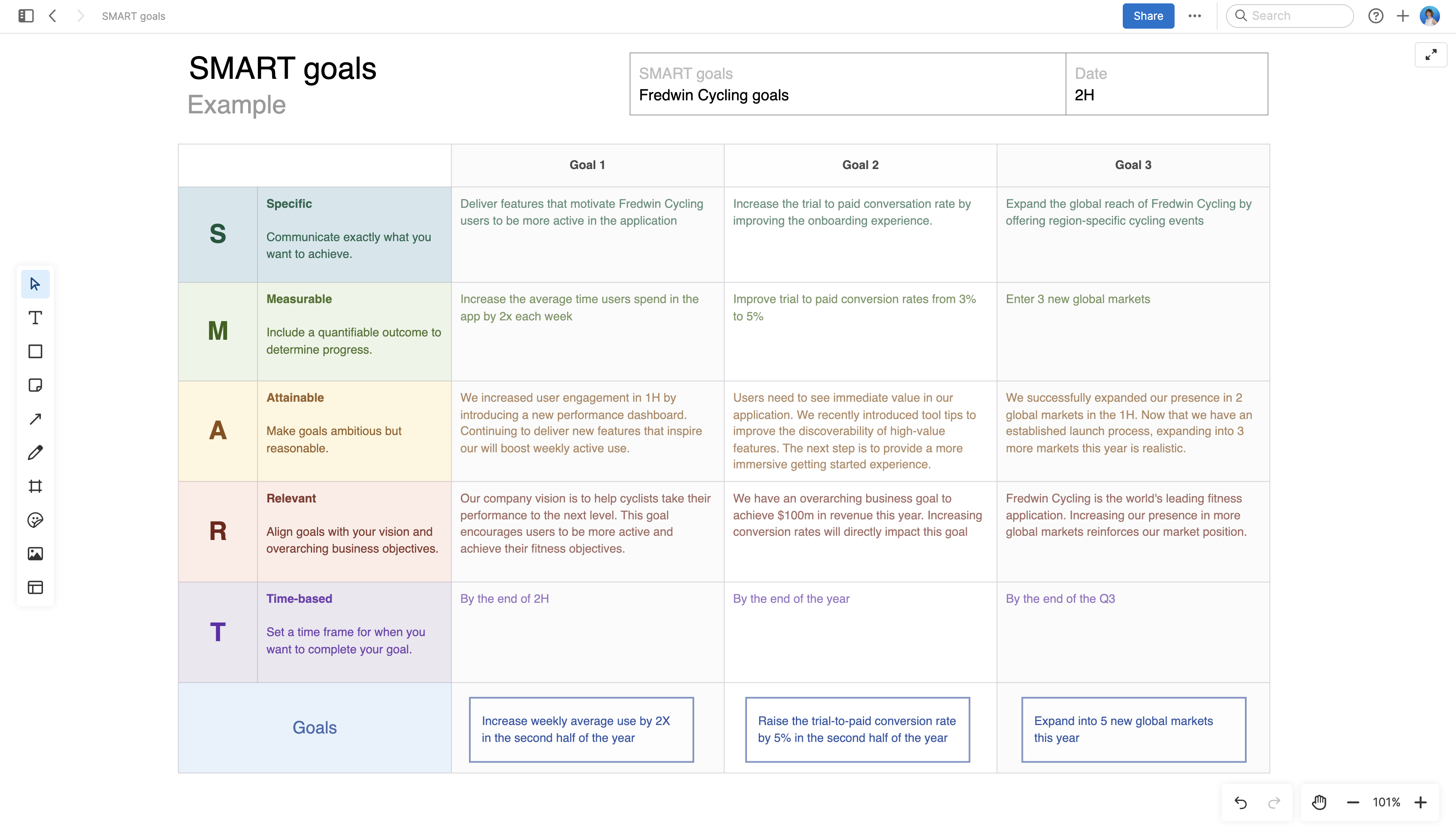SMART goals template
Use SMART goals to establish objectives for your product or team
Use template
About the SMART goals template
People who set goals get more done — at least, that is the assumption. But you have to be smart about the goals you set. And it is not really about getting more done — it is about getting the right things done.
SMART goals can help you focus on the right things. They give you a framework for setting team and product goals that are specific, measurable, attainable, relevant, and time-based. The idea is that applying well-defined, concrete criteria enhances the team's focus, accountability, and likelihood of achieving the goals.
Use this template to build and share SMART goals. When everyone knows what they aim to achieve, they can make better choices about what to work on now versus later.
Best practices
Set meaningful objectives and bring more clarity and focus to your team.
Define your goals Each goal should focus on one thing only — using clear, precise language. Use action-oriented verbs to describe what needs to be done.
Quantify success Specify how you will track and measure progress towards goals. Include a quantifiable metric — such as a numerical value or percentage — so you will know when a goal has been achieved.
Consider the broader impact Make sure each goal is realistic — considering available resources, time, and other constraints — and that each aligns with your overarching business objectives.
Formalize your strategy Include a time frame for achieving each goal and write a concise statement summarizing what you want to accomplish. Convert directly into goals in Aha! Roadmaps to codify your objectives.